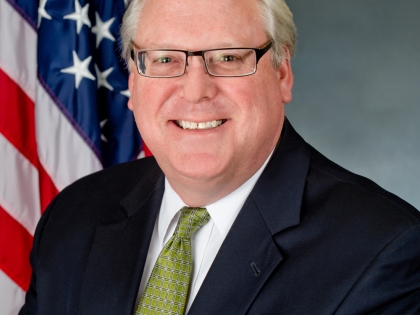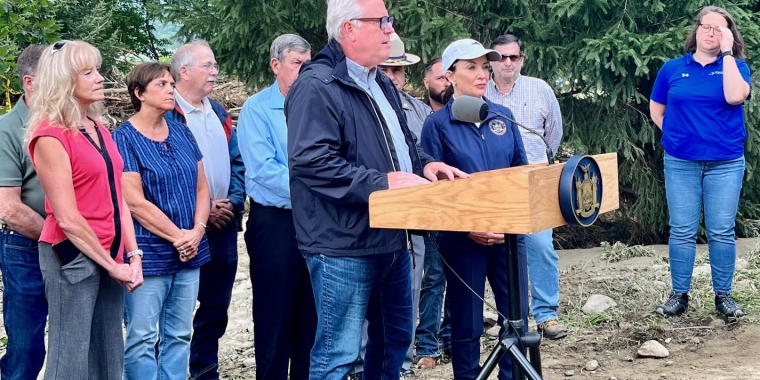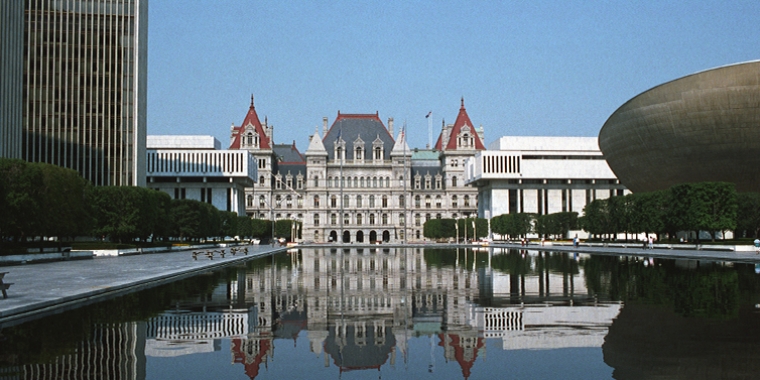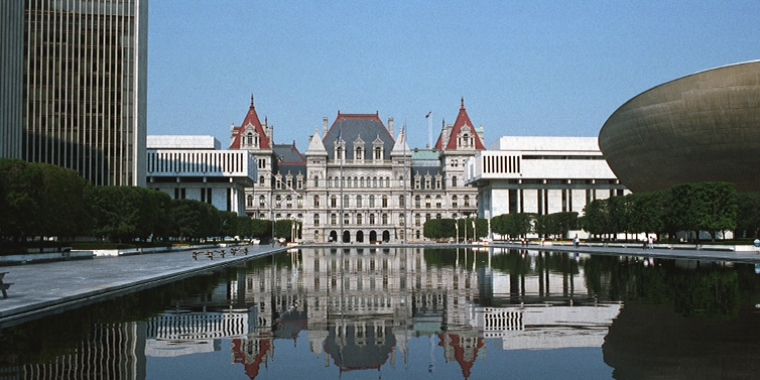
Senator O'Mara's weekly column 'From the Capitol' ~ for the week of January 24, 2022 ~ 'Is a spending spree what New York State really needs?'
January 24, 2022

Senator O'Mara offers his weekly perspective on many of the key challenges and issues facing the Legislature, as well as on legislative actions, local initiatives, state programs and policies, and more. Stop back every Monday for Senator O'Mara's latest column...
This week, "Is a spending spree what New York State really needs?"
As anticipated and as I predicted in an earlier column, “billions” is now the defining word of the upcoming state budget due to be enacted by April 1st.
In fact, I have never heard a governor so free and easy with the use of the word billions as Governor Kathy Hochul was when she presented her proposed 2022-2023 New York State budget early last week.
Her roughly $216 billion budget plan – already approaching $5 billion higher than last year for what will be the largest budget in New York’s history – jumpstarts New York into the stratosphere of state budgets now and well into the future.
It’s a direction that should jolt state and local taxpayers too.
State budgets, remember, never go down once programs are put in place and keep expanding, and as new and even bigger programs and spending commitments get added. That’s been true in New York State for some time now, but the startling spending increases we are witnessing at the moment are unprecedented.
What are we facing?
It’s good news, great news in fact, that New York State is facing a surplus that Governor Hochul pegs at approximately $5 billion for this year, and that for the next several years, according to the governor’s financial projections, will keep the state’s budget balanced. That hasn’t been the case in a long time.
It’s good news, as well, that Governor Hochul recognizes the wisdom of setting aside at least some of this largesse in reserve for the inevitable rainy days to come. I and many fiscal watchdogs have been calling for that sort of caution for some time.
And it’s good news in many other ways because, it goes without saying, what’s not to like in a $216-billion spending plan that touches all the bases from agriculture to education to health care to transportation, and virtually everything imaginable in between?
Nevertheless, that extremely liberal use of the word “billions” should set off more than a few alarms and raise more than a few red flags.
Keep in mind that a significant measure of the overflowing state treasury is the result of a one-time, massive influx of federal COVID-19 relief assistance. Those dollars will not be recurring. The federal windfall will dry up. Sooner or later it falls back to the state alone to foot the bill for a good deal of new spending while facing an economic future that is, in my view, uncertain at best.
Governor Hochul assures us that her plan is fiscally prudent today and well into the future. She backs up her optimism with plenty of charts and facts and figures. But that’s what executive budgets are supposed to do. If there’s one thing we know, it is that numbers and projections can be made to tell whatever narrative you want them to advance.
Governor Hochul does her best to work a strong narrative of fiscal responsibility through a proposed budget that, at its core, is about a spending spree – and that’s before she even sits down with Democrat majorities in the Senate and Assembly that will want to spend even more.
That’s my number one concern and warning at the beginning of this year’s budget adoption process. Is Governor Hochul’s direction sustainable, by any stretch of the imagination, for today’s and tomorrow’s taxpayers? The Hochul budget proposal at more than $216 billion, even before the Legislature’s Democrats get their hands into it, is already larger than the budgets of the states of Florida and Texas combined, despite each of those states having higher populations than New York.
New York remains one of the highest-taxed states in America. We are one of the most overregulated states in the nation. Our local governments and local property taxpayers continue to foot the bill for one of the country’s heaviest burdens of unfunded state mandates. It’s troubling that the governor and top legislative Democrats keep talking about bigger and bigger state government spending at a time when the priority should be a long-term, steady, sustainable future for upstate, middle-class communities, families, workers, and taxpayers.
It’s concerning, to say the least, that Albany Democrats could be charting a course for New York that could leave a generation of state and local taxpayers footing the bill for a questionable and unsustainable agenda of overspending.
I’ll warn again that Governor Hochul and the Legislature’s Democrat majorities could be focusing on unrestrained spending over broad-based tax relief to spark job creation and economic growth, tackling unfunded state mandates on localities to truly ease the burden on local property taxpayers, and reducing New York’s long-term debt load.
First things first, however. Beginning this week, the Legislature’s fiscal committees – the Senate Finance Committee, and the
Assembly Waysand Means Committee – will convene a series of public hearings to examine, in detail, the various segments of Governor Hochul’s proposed budget to assess its impact on specific programs and services.
In the meantime, many details on the governor’s budget proposal are available on the state Division of the Budget (DOB) website, www.budget.ny.gov.
As the Ranking Republican member on the Senate Finance Committee, I welcome the opportunity these hearings provide, at this critical time, for direct input on a range of policy areas that will decide the short- and long-term future and strength of our local communities and economies. Senate Republicans will continue to be a voice for lower taxes, less regulation, greater accountability, economic growth, job creation, and more common sense on state fiscal practices.
The new 2022-2023 state budget could have a transformational impact on so many of the key issues facing our localities, from the future of farming and manufacturing to tax relief, regulatory reform, overall Upstate job creation, health care, education, and so much more.
I have stressed throughout the COVID-19 response over the past two years that we need an open and full discussion on the best ways to move forward for this entire state, upstate and downstate. It requires a restructuring of New York government, strengthening the state-local partnership, and getting to work rebuilding New York with the right priorities and long-overdue commonsense reforms.
###
Share this Article or Press Release
Newsroom
Go to Newsroom


